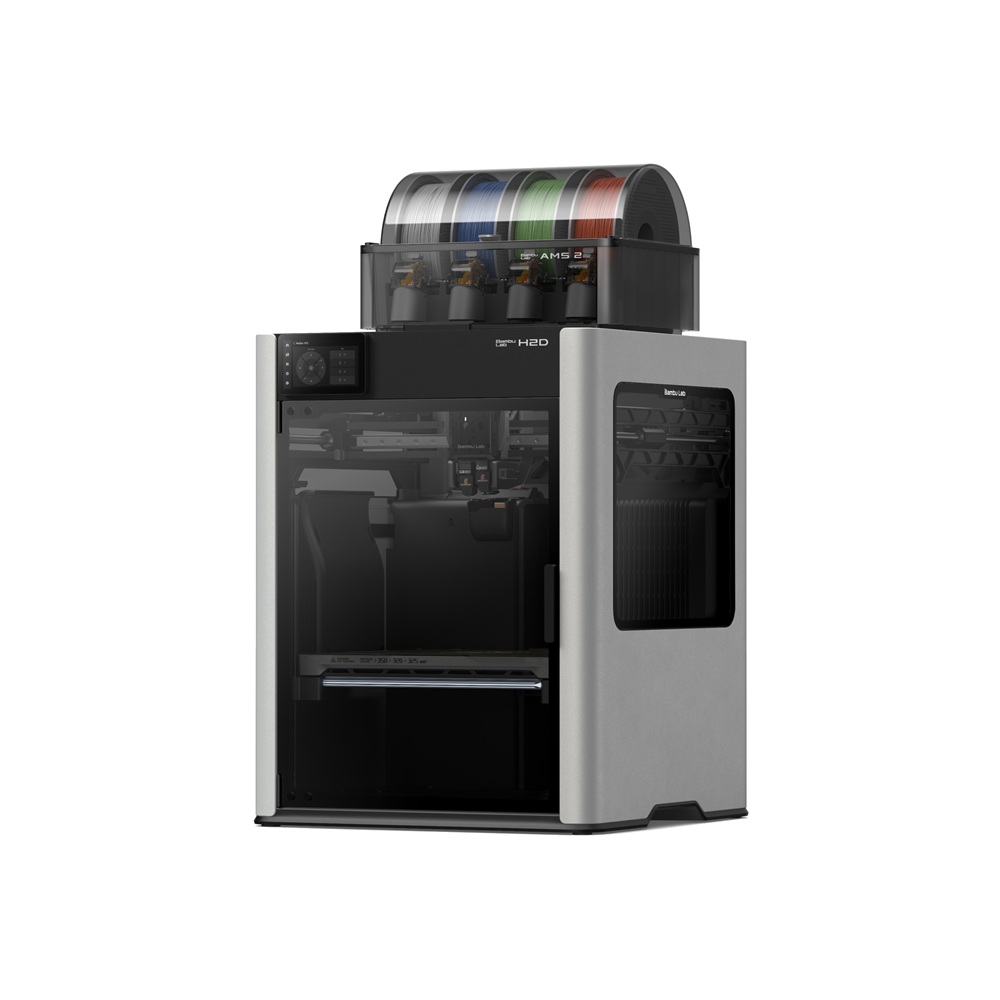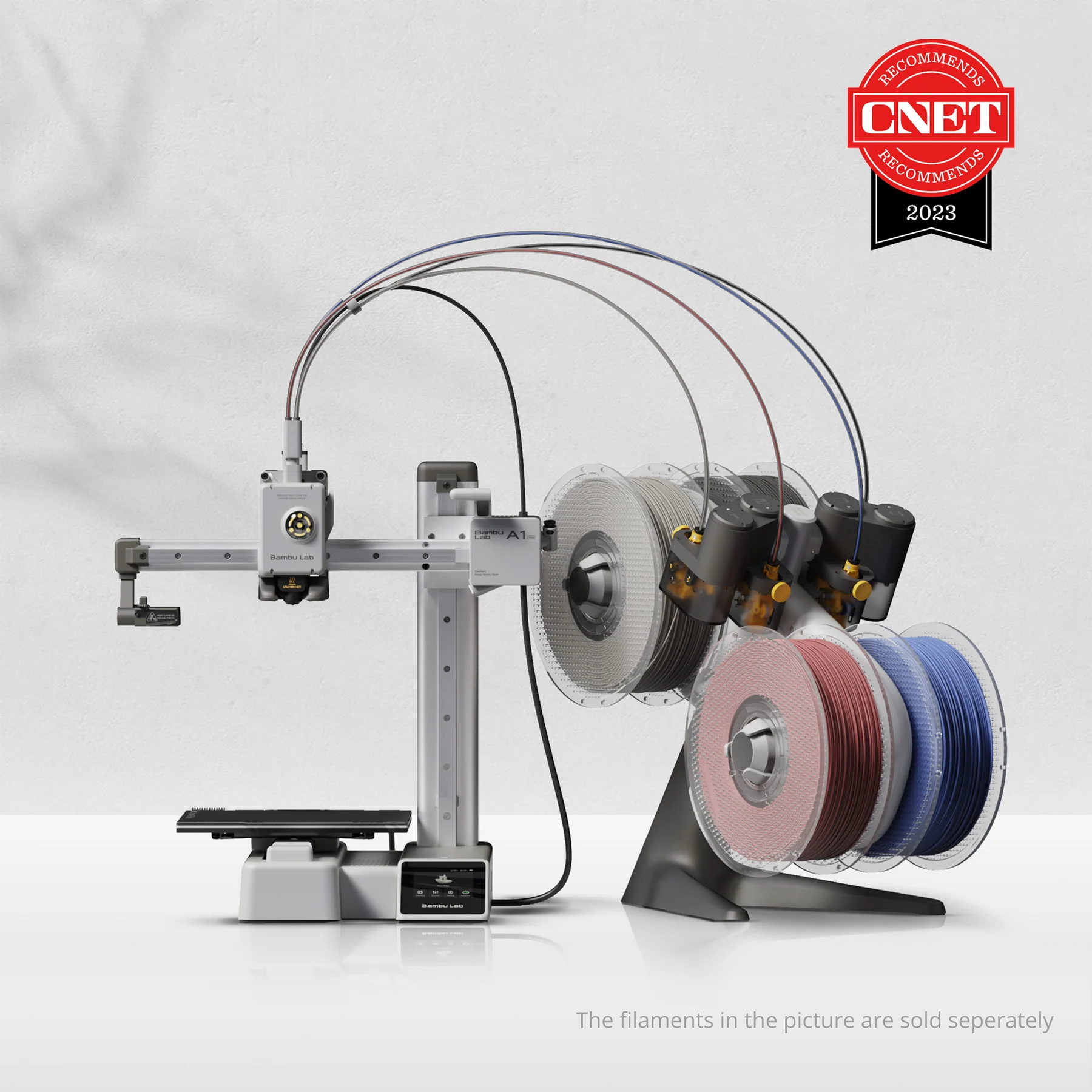Compare H2D vs A1 Mini
Comparison between the best 3D printers
Choose the best 3D printer at the best price. The cheapest 3D printers are here.
Buy a 3D printer here with 3D Fila.
 |
 |
|
| Model | H2D |
A1 Mini |
| Printing Material | Filament | Filament |
| Buy Filament for Bambu Lab H2D | Buy Filament forBambu Lab A1 Mini | |
| Estimated price | $1899,00 | $549,00 |
| Manufacturer | Bambu Lab | Bambu Lab |
| Release Year | 2025 | 2023 |
| Print Volume [mm] | 350x320x325 | 180x180x180 |
| Printer Size [mm] | 492x514x626 | 315x347x365 |
| Weight [kg] | 42,3 | 5,5 |
| Power Loss Recovery | YES | YES |
| Enclosed printer | YES | NO |
| Bed Leveling | Automatic | Automatic |
| Filament End Sensor | YES | YES |
| Bed type | Heated | Heated |
| Power supply system | Direct Drive | Direct Drive |
| Standard nozzle | 0,4 | 0,4 |
| Maximum Nozzle Temperature [°C] | 350 | 300 |
| Maximum Bed Temperature [°C] | 120 | 80 |
| Maximum printing speed [mm/s] | 600 | 500 |
| Filament holder | YES | YES |
| Camera for supervision | YES | YES |
| Recommended filaments | PLA, PETG, ABS, ASA, TPU, PVA, Nylon (PA) | PLA, PETG, TPU, PVA |
| Recommended slicers | Bambu Studio | Bambu Studio, Super Slicer, Cura, Prusa Slicer, Orca |
| Maximum Resolution [mm] | 0,01 | 0,1 |
| Processor | 32-bit Silenciosa | |
| Display | Touchscreen 5'' | Touchscreen 2,4'' |
| Power Supply | 150 W | |
| Connectivity | Wifi, Bambu bus, Cartão SD | Wifi, Bambu bus, Cartão SD |
| Operating systems | Windows, Mac, Linux | Windows, Linux, Macbook |
| Date of registration in the system | 2025-03-31 | 2024-04-10 |
| Release date | 2025 | 2023 |
| Extra features | Bambu Labs H2D combines high-speed 3D printing with a chamber heated up to 65 °C, dual extrusion with automatic nozzle switching, an AMS for filament drying and exchange, and AI sensors that detect failures. It offers optional laser and digital cutting capabilities, features intelligent calibration through computer vision, vibration control, enhanced fire safety, and real-time camera monitoring. | The Bambu Lab A1 Mini stands out not only for its impressive speed and automatic calibration, but also for its multi-color printing capability thanks to AMS Lite. This innovative system makes multi-color printing easy, making it accessible to everyone. AMS Lite, specific to the A1 Mini, supports up to four different materials simultaneously, providing creative freedom without complications. With comprehensive sensors for energy monitoring and recovery, a camera for timelapses and Wi-Fi control, the A1 Mini and AMS Lite together offer an intuitive and advanced 3D printing experience, ideal for materials such as PLA, PETG and TPU, and designed for simplicity and fast maintenance with quick-change nozzles. |
| Support for multiple colors and materials (AMS and CFS) | YES | YES |
Notes * |
||
| Cost-benefit | 7 / 10 | 7 / 10 |
| Hardware | 8 / 10 | 4.8 / 10 |
| Tela | . | . |
| Print volume | 4 / 10 | 3 / 10 |
| Performance | 5 / 10 | 4 / 10 |
Conclusion |
| In conclusion, when comparing the Bambu Lab H2D and the A1 Mini, several key factors come into play that cater to different user needs and budget allocations. The Bambu Lab H2D stands out with its larger print volume, advanced features such as dual extrusion, AI sensors for failure detection, enhanced safety protocols, and the potential for laser and digital cutting capabilities. It is designed for users who seek high-performance 3D printing, require versatility in materials, and are willing to invest in a premium model. Its ability to print at higher speeds and temperatures further enhances its appeal for more complex projects requiring professional-grade results. On the other hand, the Bambu Lab A1 Mini is tailored for entry-level users or hobbyists looking for a more affordable option that still offers an impressive range of features, including multi-color printing through the AMS Lite system. Its smaller footprint and lightweight design make it ideal for those with limited space, while its straightforward operation and excellent sensor capabilities provide a solid 3D printing experience without overwhelming new users. Ultimately, the choice between the two models should be guided by the specific needs of the user. Those requiring extensive printing capabilities with a focus on professional output may find the H2D a worthwhile investment. Conversely, users seeking a balance of performance, affordability, and accessibility may prefer the A1 Mini, making both printers commendable choices in the 3D printing landscape. |

